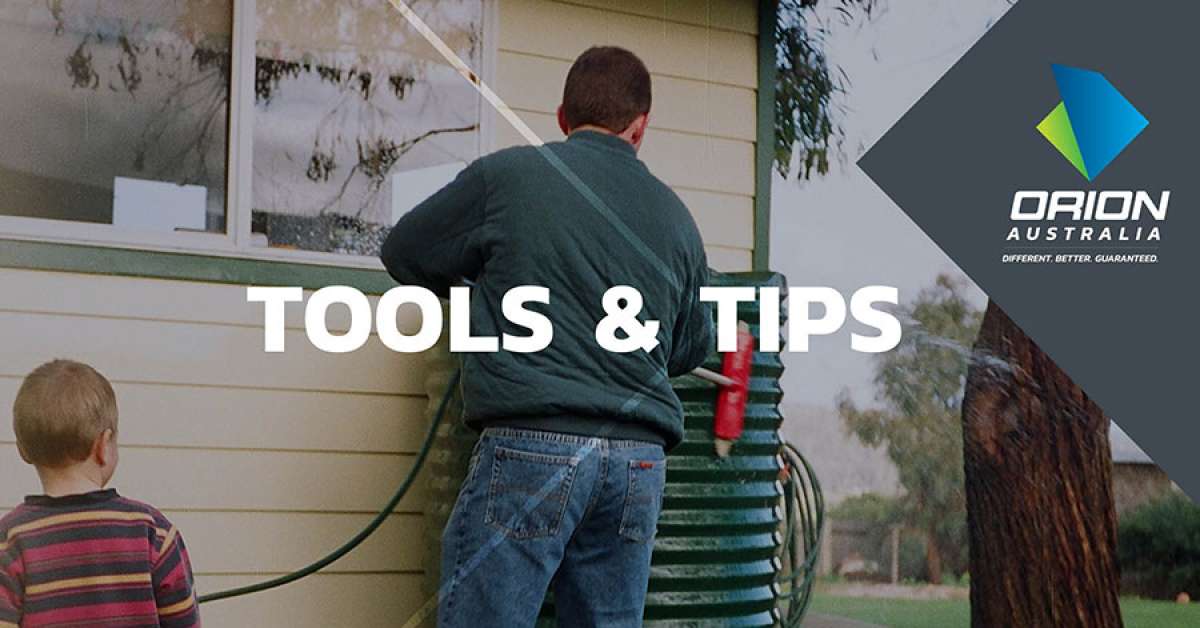13 February 2019
Save Money with Rainwater Tank Maintenance
Regular maintenance of your rainwater tank is vital for the longevity of your system and for your health.

Regular maintenance of your rainwater tank is vital for the longevity of your system and for your health. Don"t wait until your water tastes strange or goes a funny colour! To keep everything running smoothly into the future perform this check up every six months. This easy check-up prevents possible contamination and any property damage.
RAINWATER TANK INSPECTION CHECK LIST:
Gutters are clean - Remove large amounts of leaf material or any other debris.
Cleaning out the gutters is a simple way to improve the water quality and the efficiency of the tank. Leaves, twigs and even bird droppings can build up in gutters and find their way into your rainwater tank. Installing gutter meshing can be a great way to reduce build-up.
No clutter on or near roof - Look for accumulated debris like leaves or other plant material and clear away anything that has built up.
Prune any overhanging branches and remove any leaf build-up and sticks etc off the lid of your tank. Pot plants or other items should not be placed on top of your tank.
Filters in place - Ensure rainwater tank inlets have leaf strainers and insect filters in place, and have been cleaned or repaired if necessary.
Rainwater tanks are the perfect breeding ground for mosquitoes and other insects. Poorly maintained mesh allows disease carrying insects to multiply in the rainwater tank—posing a risk to the health of you, your family and the broader community.
No cracks or damage - Rainwater tank and roof are intact.
Cracks in your water tank can allow light, insects and other contaminants to get into your water tank and, of course, they can also allow water to seep out.
No bugs or algae in tank - Peek inside and look for evidence of animal, insect, or algal activity.
Most mosquito larva make their way into your tank having first bread in clogged gutters. They wash down the downpipe and are small enough to pass through the inlet strainer into your tank.
A small amount of chlorine in the tank will kill off most insects and bacteria. It is best to use the tablets from a pool supplier but ensure you check with them the recommended dosage depending on your tank capacity. The chlorine will disinfect the water and then after a week or so most will be evaporated out of the water.
Pipework is sound - The pipes to and from the tank look good.
The condition of the pumps and outlets will affect the quality of the water and the efficiency of how the household can access and use the water. A well-maintained system can also protect against long-term damage.
Drain any pipes that are holding water. This can be difficult for buried pipework, but is important. All pumps should be removed and serviced every few years to help ensure they remain in good working order and to prolong the pump life. Surface-mounted pumps must be kept clear of ground water and overgrown vegetation, and should have adequate ventilation.
Sediment Build-up
Over time your tank will build up a sediment layer on the bottom of the tank which is normal. This layer build up is dust that settles out of the water which has run off your roof and gutters. This is harmless and natural. However, it becomes a problem when sediment builds up to the level of the outlet. Every 2-3 years you'll also need to remove any accumulated sediment that may have gathered on the bottom of the tank.
Following these regular maintenance tops will prevent most common water tank issues and help maintain a quality water supply.


